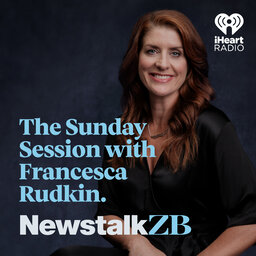Francesca Rudkin: How did loneliness become a global epidemic?
This week, the World Health Organisation launched a new Commission on Social Connection. It may sound like an online dating group; it’s not. The Commission aims over the next three years to focus on ways to address the ‘pressing health threat’ posed by a global epidemic of loneliness.
Loneliness is considered a health issue because it has serious impacts on our mental and physical health. Research shows it can increase the risk of heart disease, arthritis, type-2 diabetes, and can increase the risk of premature death and accelerate cognitive decline.
Earlier this year, the U.S. surgeon general published an advisory claiming the health risks associated with loneliness are equivalent to smoking 15 cigarettes a day.
So how did we get to the point where something each and every one of us should be able to do something about needs to be recognised as a global epidemic and health threat?
Covid gave us a reality check - our children were isolated from their peers, workers isolated from office culture, and our elderly isolated from family and friends. It’s something we should all be aware of.
What’s interesting about what the World Health Organisation has come out with is that rates of loneliness are similar all over the world, regardless of a country’s status and level of income. And we’ve already seen some countries take it seriously – in the UK a Minister of Loneliness was appointed in 2018. Apparently the announcement was greeted with humour on both sides of the Atlantic, but since then the Japanese Government and the Victorian state Government have done the same, in 2021.
It turns out they were on the money when they recognised this growing issue.
We’ve been measuring loneliness in New Zealand for a while. The latest survey in May found younger people (aged 15-24) are more likely than other age groups to be lonely. It makes sense; we’re not just talking about social isolation, but also social alienation, a feeling of not ‘fitting in’ which so many young people struggle with. The other demographic who struggle are older people.
Yesterday, Newsroom ran an article from researchers Claire Dale and Susan St John talking about who is going to care for us when we grow old – the article deals with a different subject, but their stats were eye opening.
“By mid-century the numbers over 65 years are expected to nearly double (from 790,000 in 2020 to around 1.4 million). The baby-boomers will all be over 85 where the numbers roughly treble (from 88,000 in 2020 to around 300,000).”
If we're going to care for this 'looming tsunami of older baby boomers' then the WHO is onto something. Maybe starting to think about strategies for dealing with loneliness – for all ages - now isn't as silly as it sounds.
LISTEN ABOVE
 The Sunday Session with Francesca Rudkin
The Sunday Session with Francesca Rudkin


